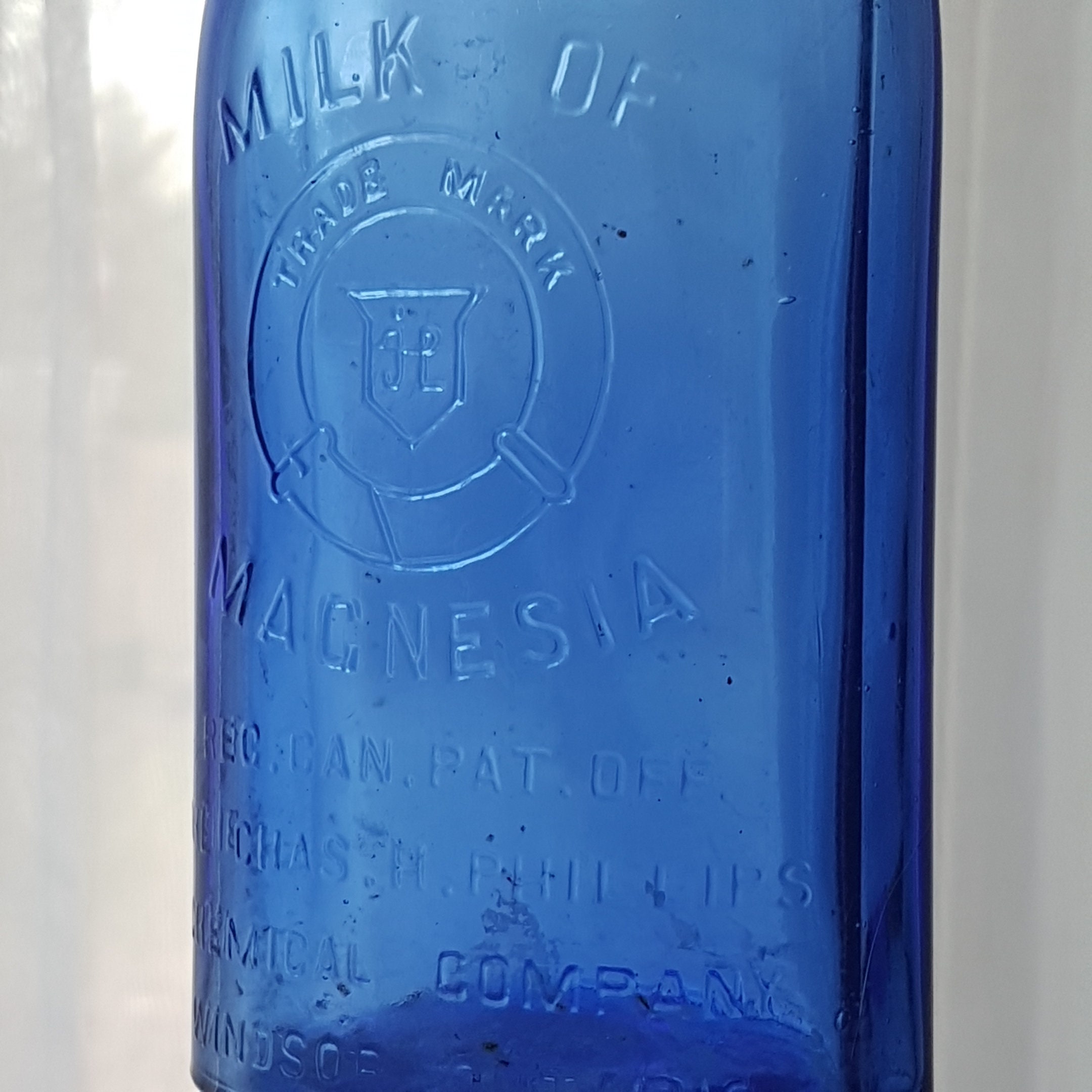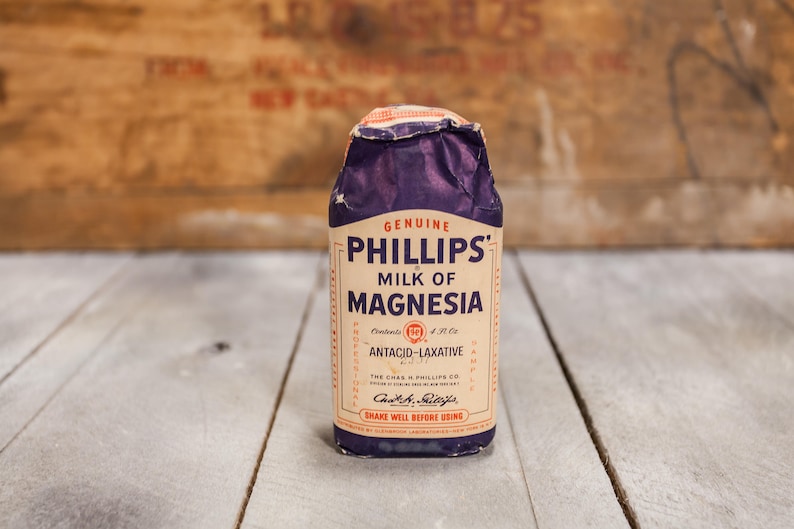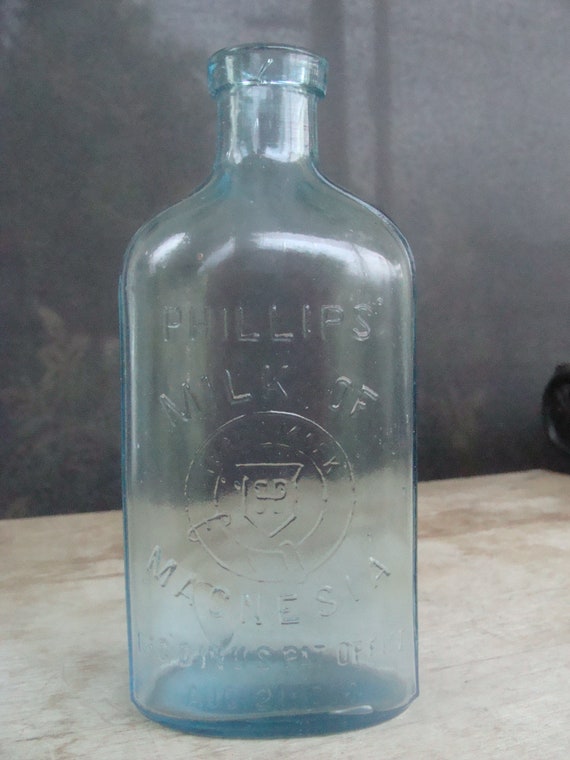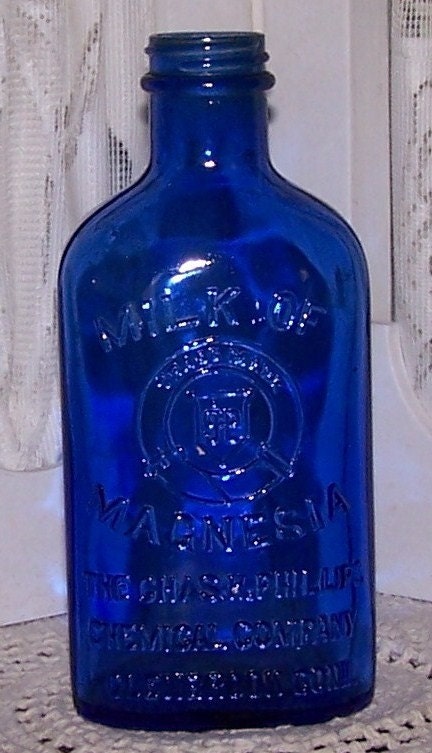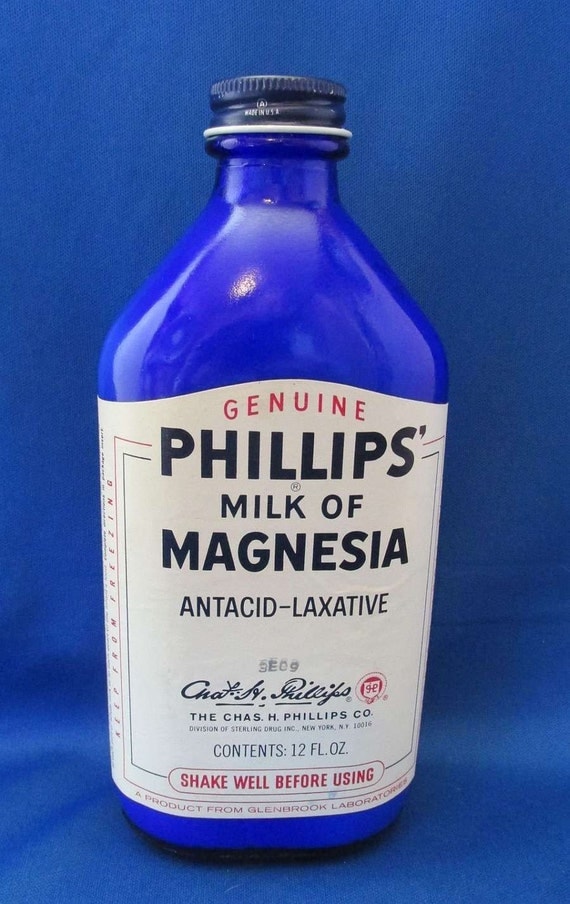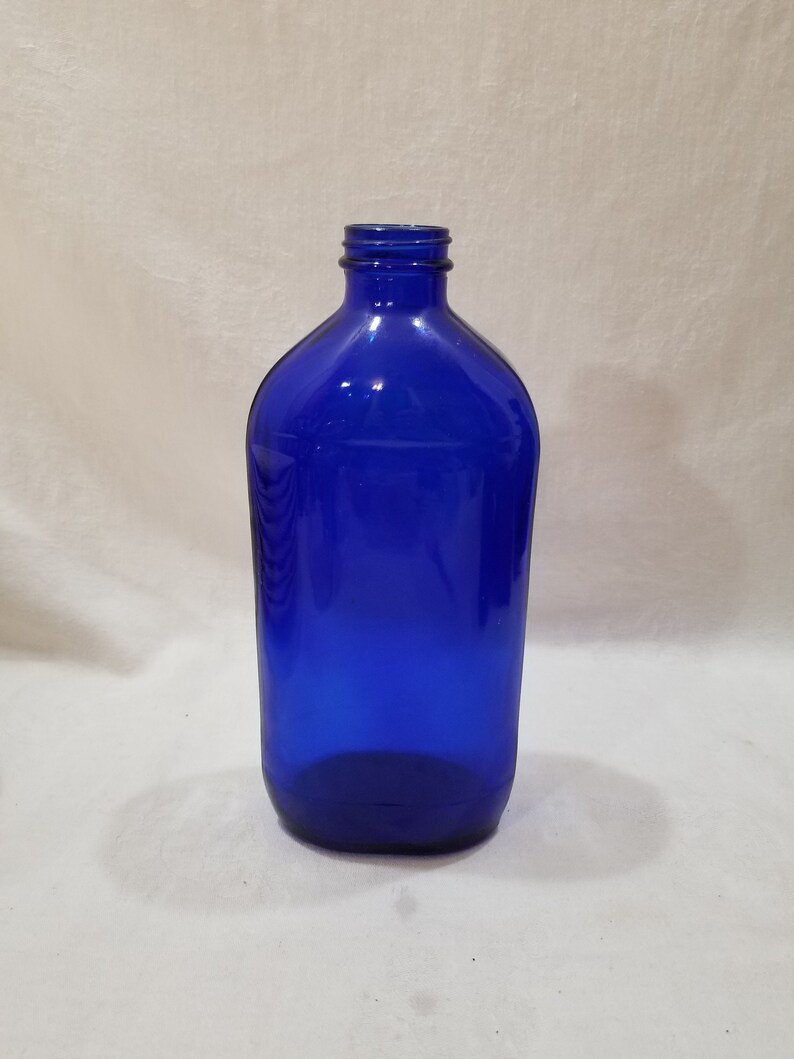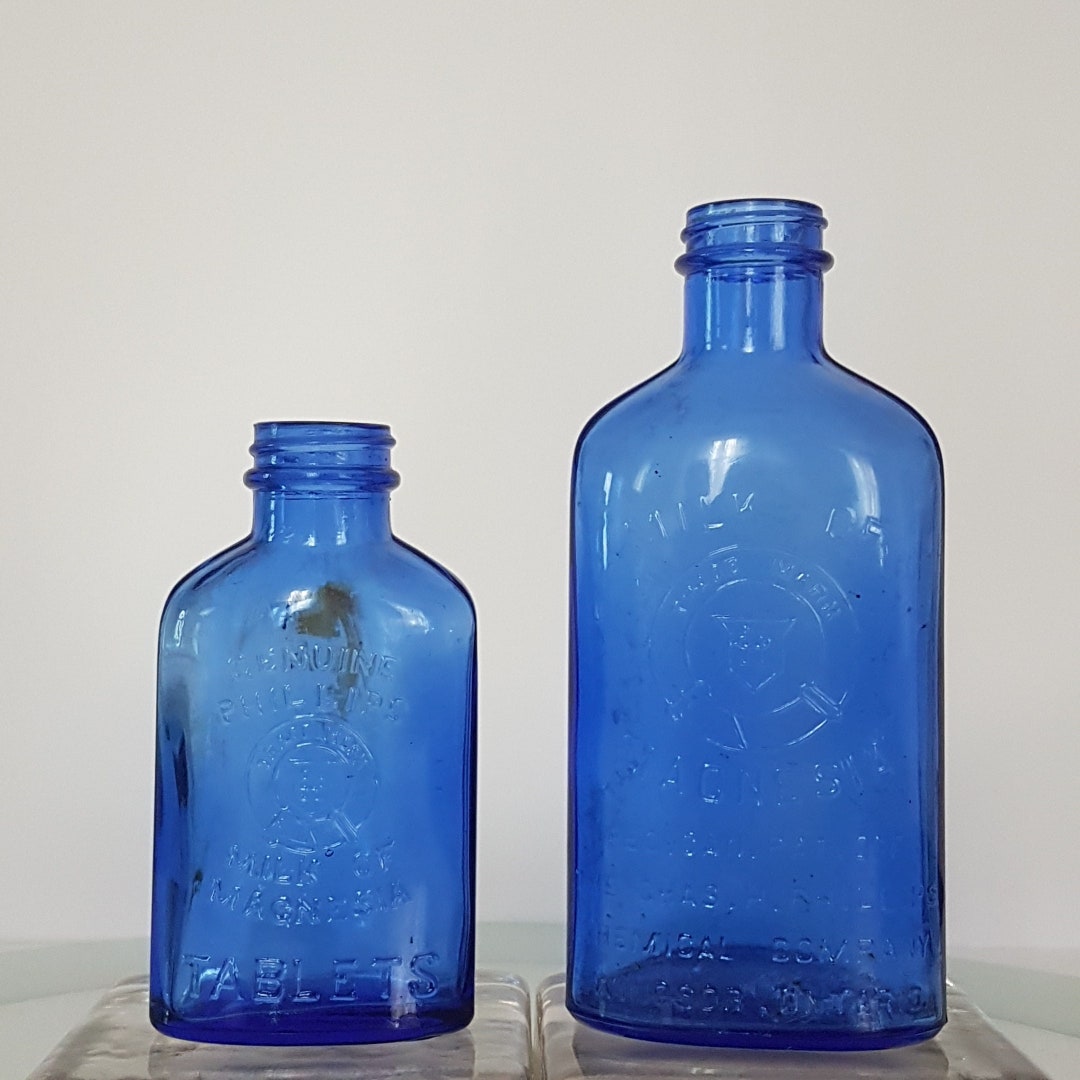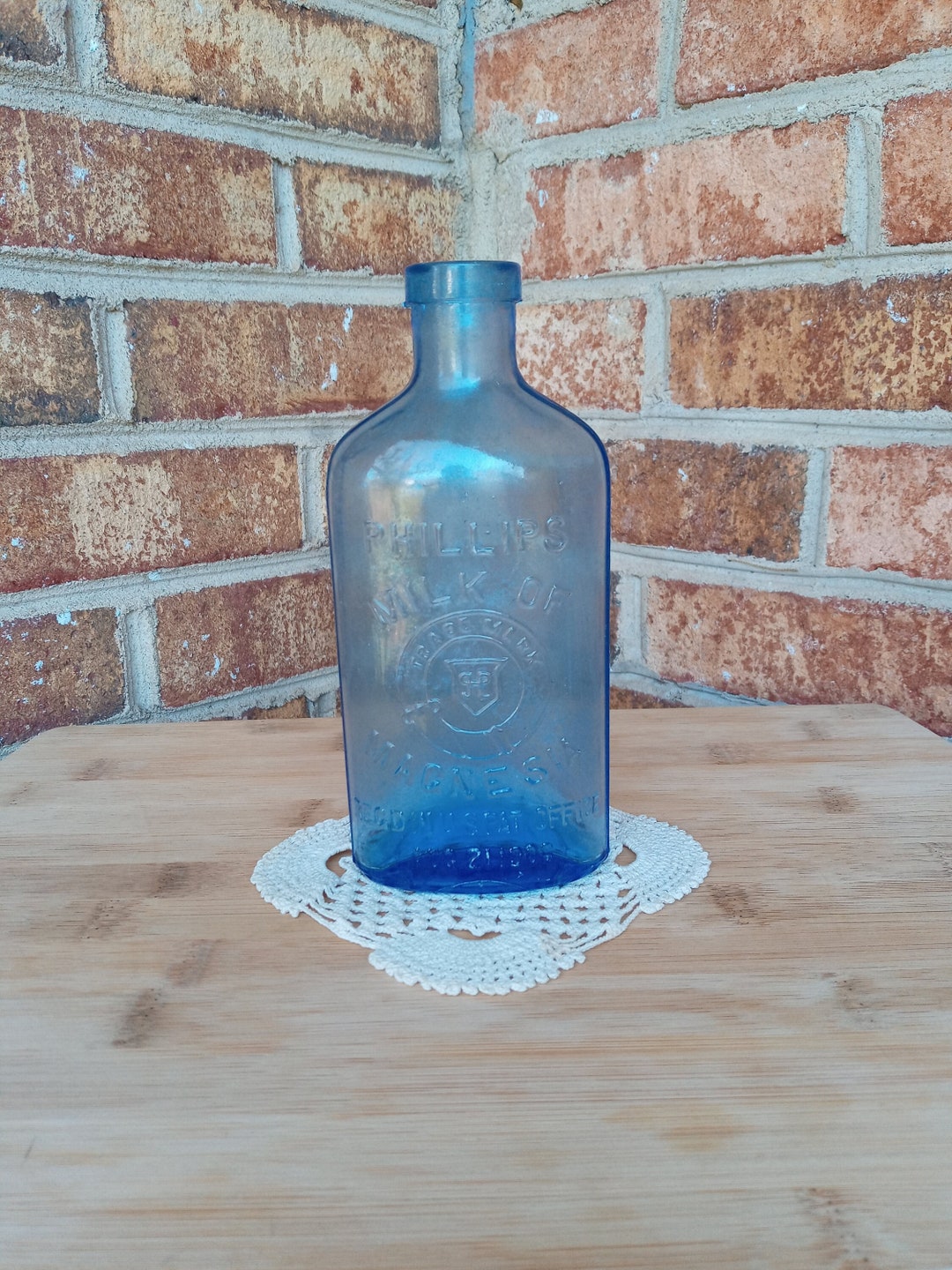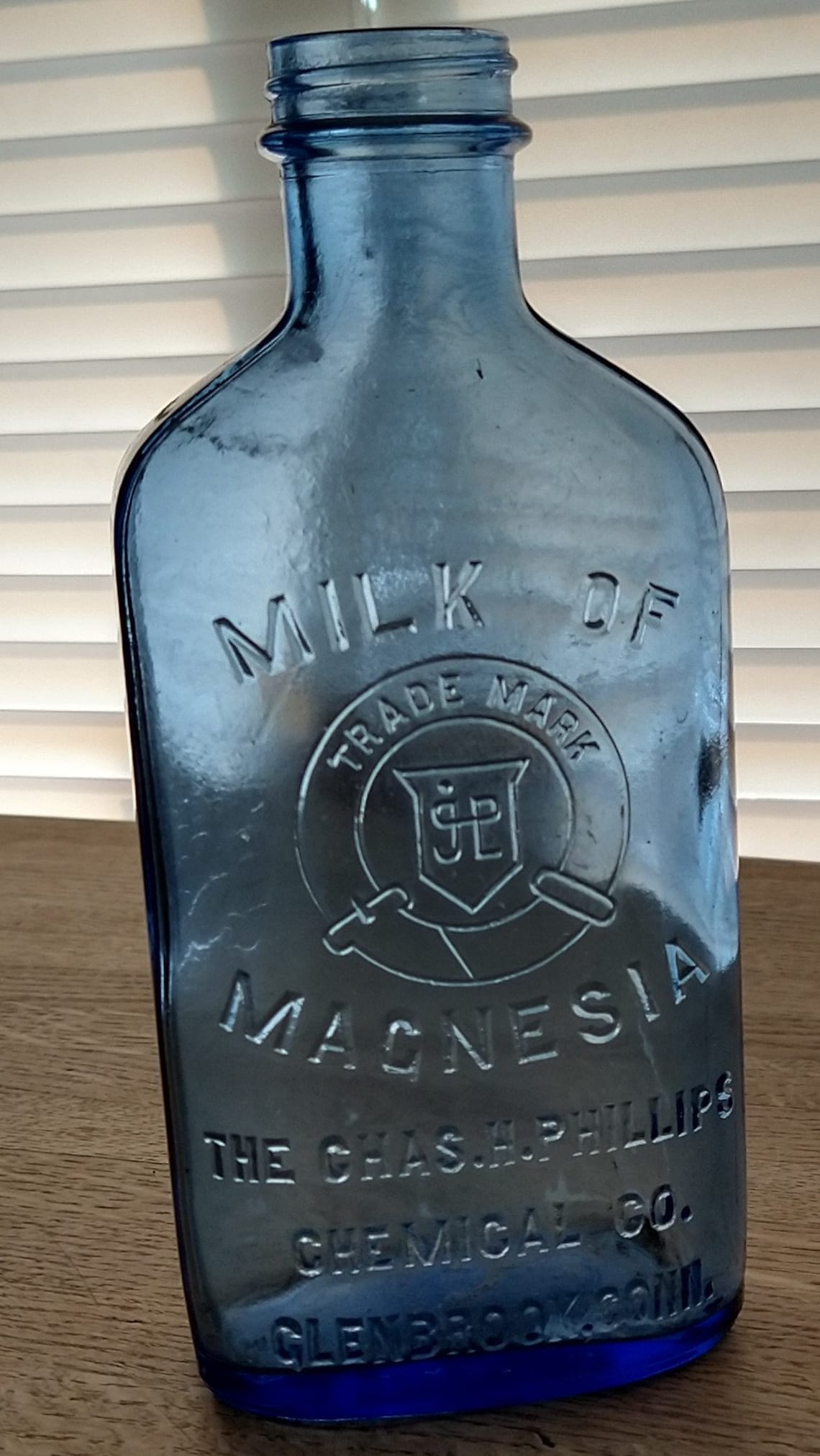Phillips Milk Of Magnesia Glass Bottle

Imagine sifting through a box of your grandmother's old belongings – the scent of lavender and time clinging to everything. Sunlight catches on a familiar shape, a stout, opaque bottle with a faded blue label. It's a Phillips' Milk of Magnesia bottle, a relic from a simpler time, whispering stories of family remedies and quiet evenings.
These iconic glass bottles, once a staple in medicine cabinets across America, represent more than just a bygone era of pharmaceutical packaging. They symbolize a connection to the past, a tangible link to the way our families cared for themselves and each other. The bottles evoke a sense of nostalgia, craftsmanship, and the enduring appeal of a trusted brand.
A History Etched in Glass
The history of Phillips' Milk of Magnesia stretches back to the late 19th century. Charles H. Phillips, a pharmacist from Glenbrook, Connecticut, is credited with formulating and marketing the product. It quickly gained popularity as a gentle and effective remedy for indigestion and constipation.
Originally, Phillips' Milk of Magnesia was packaged in clear glass bottles, but the signature opaque blue bottle we recognize today emerged in the early 20th century. This change was primarily to protect the product from light degradation, ensuring its efficacy and shelf life. The blue color, a clever marketing choice, further distinguished Phillips' Milk of Magnesia on store shelves.
The bottles themselves were a testament to the glassmaking craftsmanship of the time. Embossed lettering, detailing the product name and manufacturer, added a tactile element that is often missing from modern plastic packaging. The bottles were designed to be sturdy and reusable, reflecting a culture that valued durability and resourcefulness. These details resonate with collectors today.
More Than Just a Bottle: A Cultural Icon
The Phillips' Milk of Magnesia glass bottle transcended its utilitarian purpose, becoming a cultural icon. Its presence in countless homes cemented its place in the collective memory of generations. Advertisements featuring the bottle appeared in magazines, newspapers, and even on radio, further amplifying its visibility.
Many people recall the bottle as a comforting presence during childhood illnesses. The distinct taste and texture of the medicine might not have been pleasant, but the association with care and relief is powerful. As documented in numerous online forums dedicated to vintage collectibles, the bottle stirs up memories of grandmothers' remedies and the security of home.
The bottles are now cherished by collectors who appreciate their historical value, aesthetic appeal, and the stories they represent. According to antique bottle collecting guides, the value of these bottles varies depending on their age, condition, and rarity, but their intrinsic value as pieces of Americana remains constant.
The Shift to Plastic and the Enduring Appeal of Glass
Eventually, Phillips' Milk of Magnesia transitioned to plastic bottles, a shift driven by factors such as cost, weight, and ease of manufacturing. While practical, the change also marked the end of an era for the iconic glass bottle. Plastic bottles offered better protection but lacked the charm and personality of their predecessors.
Despite the shift to plastic, the glass bottles continue to hold a special place in the hearts of many. They are reminders of a time when products were made with care and designed to last. The bottles also symbolize a connection to family history and the simple remedies that once filled our medicine cabinets.
The enduring appeal of the Phillips' Milk of Magnesia glass bottle lies not just in its physical form, but in the memories and emotions it evokes. It's a tangible piece of history, reminding us of a time when things were made to last and when a simple blue bottle could offer comfort and relief.
